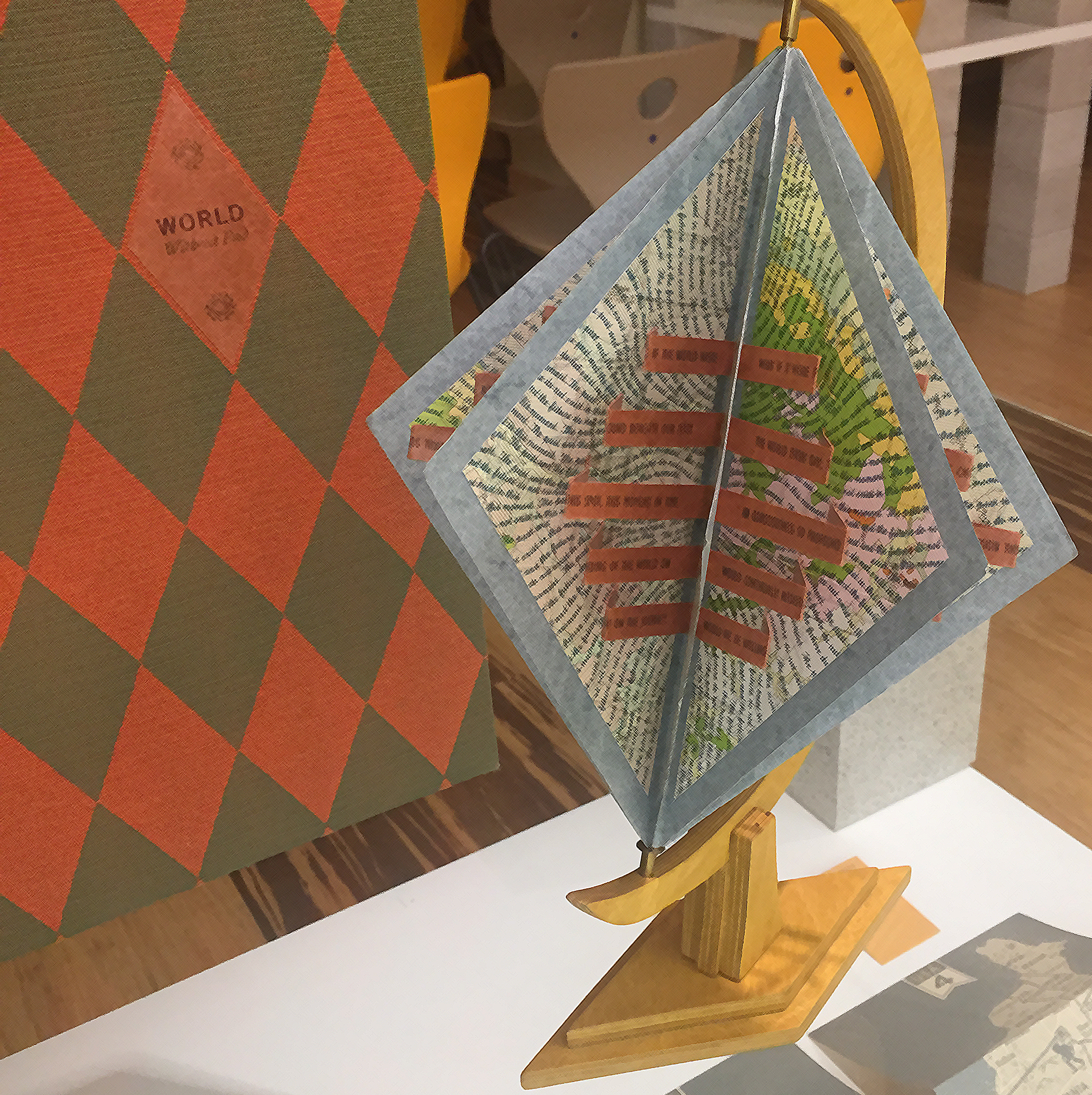Books as Aesthetic Objects


By Veronika Schäpers
Poetry by Durs Grünbein
If one purpose of artists books is to expand the meaning of the verb ‘to read,’ this work by Veronika Schäpers, 26°57, 3’N ,142°16,8’E (The Squid Book), gives prima facie evidence. Although there is descriptive material available to explain it, let’s approach it as ‘readers’ without external aid.
Noting its surprising weight. I take from the shelf a large rectangular volume covered with a black flannel protective blanket. Inside is a severe heavy acrylic-glass case with a close-fitting lid that holds a book bound in vellum, its title and imprint visible. As if in counterpoint the book itself weighs very little. The stippled and slightly irregular vellum has a rich organic fragrance; its edges are reinforced with magnetic strips that hold the vellum covers closed. The fragile book within is doubly protected, yet accessible.
A faint line, a horizon perhaps, divides the title page about a third of the way down. Seen through the vellum, the page darkens at the bottom. The title is written as map coordinates; we may not know where we are, but we are in a real place. The words “Durs Grünbein” translated in Japanese characters present an author, but of what?
Folding back the parchment, what looked like a horizon is now revealed as a page divided in three. Layers of tissue-like paper have been engineered to create pages that move from transparency to opacity . The bottoms of the pages have a deep inky blackness. The tops of the pages begin to tell a story in silhouette – a shoreline? Nautical map? The colors are aqueous, greens and grays, there are images suggesting soundings, depth indicators , and at last some language – I can tell by the way the language is presented in lines that I’m looking at poem, in German, which I do not read, and in Japanese, ditto. But at last a clue in French, a language I know: Sous Les Mers, Under the Seas. I was traveling blind, but the artist led me in the right direction, down, down, into the sea.
The next section of the book bears a date as its title instead of a directional notation: 2004/09/30 09.15h. It’s a quarter after nine in the morning on a day at the end of September in 2004. What happened on that date, why the poems, why the sea? On one page (hard to call them pages – they are envelopes of tissue that bend and sing when you turn them) the skeleton of an enormous circle rises from the depths. Is it the sun? Is it rising from the sea to shed some light on whatever mystery the book is hiding/revealing?
On the website, Schäpers begins her artist’s statement: "26°57,3’N, 142°16,8’E – At this location in the northwestern pacific [sic] the Japanese marine biologist Tsunemi Kubodera took for the first time pictures of a living giant squid in its natural environment. I chose this coordinates as the title for this book containing three poems by the Berlin-based author, Durs Grünbein."
The statement goes on to ‘explain’ the book. However, the original esoteric title, the evocative images, the inclusion of poetry and even the lack of an explanatory key push the viewer towards an appreciation this book’s artistic merit. The book qua book is an artist’s reaction, interpretation, testament to the discovery of the Giant Squid It is not the giant squid itself any more than Picasso’s Guernica is the battle. This is not a textbook but a text. The silent squid is present, but the artist speaks the language we read. Click here for slideshow.
- Judith Klau